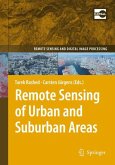This book explores how new communication and information technologies combine with transportation to modify human spatial and temporal relationships in everyday life. It targets the need to differentiate accessibility levels among a broad range of social groupings, the need to study disparities in electronic accessibility, and the need to investigate new measures and means of representing the geography of opportunity in the information age. It explores how models based on physical notions of distance and connectivity are insufficient for understanding the new structures and behaviors that characterize current regional realities, with examples drawn from Europe, New Zealand, and North America. While traditional notions of accessibility and spatial interaction remain important, information technologies are dramatically modifying and expanding the scope of these core geographical concepts.
The use of the term the information age to describe the period that we now fmd ourselves living in is open to misinterpretation. Society has always been based on exchanging information, and our libraries have long been rieh sources of vast of readily available information; it is information technologies that have quantities changed rapidly sinee the invention of the digital computer. These technologies are themselves products of long-term societal processes: The eeonomic desire to shorten the time that lapses between produetion and consumption of eommodities, annihilating space with time; the political desire to control such large-scale sys tems as commodity ehains, nations, and the military; and the human desire to lib erate ourselves from the constraints of our loeal daily lives. They also have had profound effeets on societal proeesses. One of the most widely discussed effeets, and a eonsistent theme of this volume, is that the information age is bringing about the end of geographie al distance as a signifieant baITier ofhuman interaction. This claim underlies prognostications about the information age: That this will be the age of globalization; of the global village; of the liberation of human inter action from the tyranny of space; of the dissolution of cities and workplaces; of the plugged-in soeiety; and of the surveillance society. If these prognostications were true, then the topie of aceessibility would indeed be a disappearing research pro gram and this book a marker of its disappearance.
The use of the term the information age to describe the period that we now fmd ourselves living in is open to misinterpretation. Society has always been based on exchanging information, and our libraries have long been rieh sources of vast of readily available information; it is information technologies that have quantities changed rapidly sinee the invention of the digital computer. These technologies are themselves products of long-term societal processes: The eeonomic desire to shorten the time that lapses between produetion and consumption of eommodities, annihilating space with time; the political desire to control such large-scale sys tems as commodity ehains, nations, and the military; and the human desire to lib erate ourselves from the constraints of our loeal daily lives. They also have had profound effeets on societal proeesses. One of the most widely discussed effeets, and a eonsistent theme of this volume, is that the information age is bringing about the end of geographie al distance as a signifieant baITier ofhuman interaction. This claim underlies prognostications about the information age: That this will be the age of globalization; of the global village; of the liberation of human inter action from the tyranny of space; of the dissolution of cities and workplaces; of the plugged-in soeiety; and of the surveillance society. If these prognostications were true, then the topie of aceessibility would indeed be a disappearing research pro gram and this book a marker of its disappearance.








